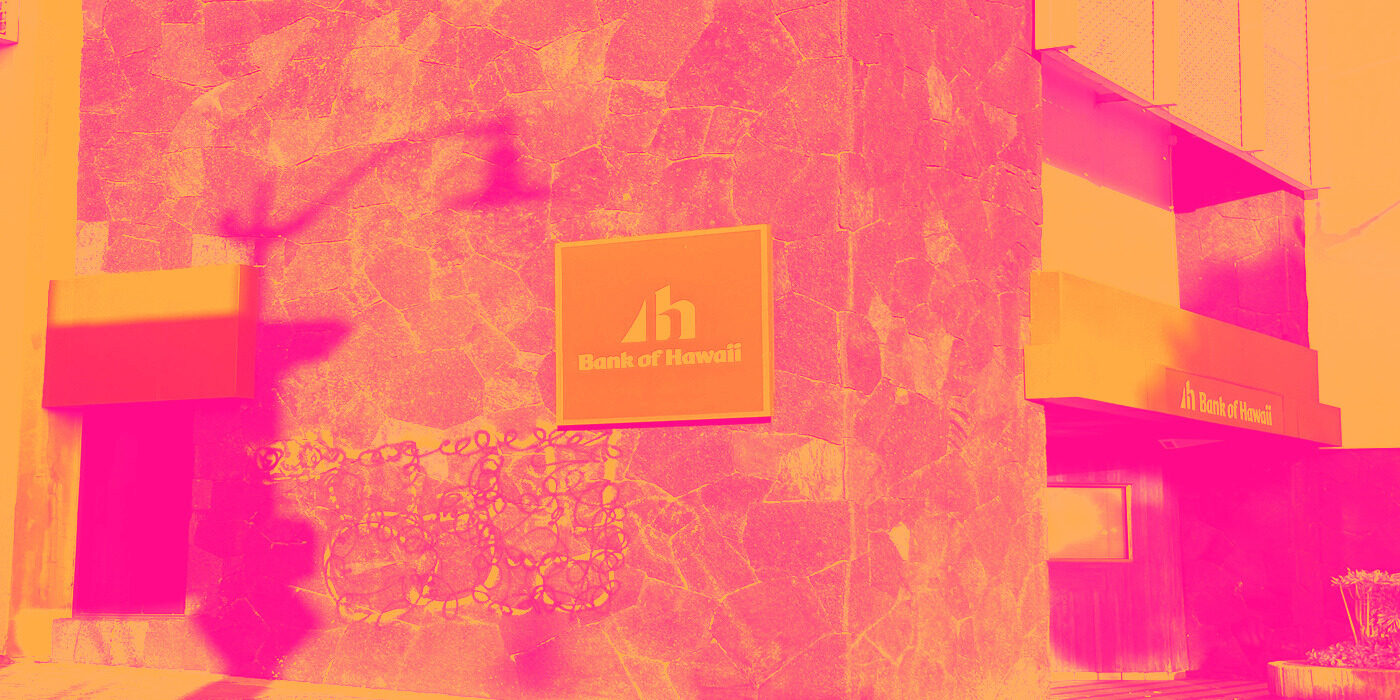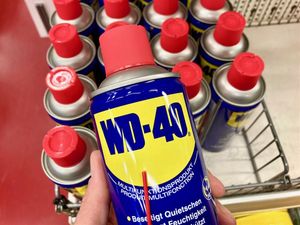
Regional banking institution Bank of Hawaii (NYSE: BOH) reported Q1 CY2025 results beating Wall Street’s revenue expectations, with sales up 8.7% year on year to $169.9 million. Its non-GAAP profit of $0.97 per share was 8.9% above analysts’ consensus estimates.
Is now the time to buy BOH? Find out in our full research report (it’s free).
Bank of Hawaii (BOH) Q1 CY2025 Highlights:
- Revenue: $169.9 million vs analyst estimates of $168.5 million (8.7% year-on-year growth, 0.8% beat)
- Adjusted EPS: $0.97 vs analyst estimates of $0.89 (8.9% beat)
- Market Capitalization: $2.65 billion
StockStory’s Take
Bank of Hawaii’s first quarter results were shaped by meaningful improvements in net interest income, stable deposit balances, and continued strong credit quality. Management emphasized that deposit funding costs fell for a second consecutive quarter, supported by the bank’s focus on maintaining lower-cost funding sources. CEO Peter Ho highlighted that “noninterest-bearing demand plus other low-yielding deposits continued to trend positively,” while net charge-offs and non-performing assets remained well below industry averages—a reflection of disciplined underwriting and a loan book concentrated in the Hawaii market. Expense growth was largely attributed to seasonal payroll items and a special FDIC assessment reimbursement, but management kept underlying expenses in line with annual targets.
Looking ahead, Bank of Hawaii’s forward guidance is anchored by expectations of further margin improvement, ongoing deposit cost reductions, and a focus on low-risk lending. Management remains cautiously optimistic about achieving a 2.50% net interest margin by year-end, contingent on continued stability in noninterest-bearing deposits and potential interest rate cuts. CFO Dean Shigemura noted that “deposit costs are expected to fall further as we continue to reprice our time deposits lower,” while Chief Banking Officer Jim Polk pointed to steady loan pipelines in both commercial and consumer segments. However, management acknowledged uncertainties related to macroeconomic conditions and potential fluctuations in Hawaii’s tourism market.
Key Insights from Management’s Remarks
Management attributed the quarter’s performance to margin expansion, stable deposit flows, and low credit losses, while highlighting risk management and limited direct tariff exposure as key themes.
- Margin expansion: Net interest income and margin grew for the fourth consecutive quarter, driven by asset repricing and a slowdown in the shift from low-cost to higher-cost deposits. Management expects additional net interest income from maturing assets being reinvested at higher rates, with CFO Dean Shigemura stating, “reinvestment of these cash flows into current market rates resulted in incremental growth.”
- Deposit stability: The bank maintained stable deposit balances and continued to grow its base of noninterest-bearing and other low-yielding deposits. CEO Peter Ho emphasized that maintaining these lower-cost funding sources is critical to supporting margins in various rate environments.
- Strong credit performance: Asset quality remained robust, with net charge-offs and non-performing assets near historic lows. Chief Risk Officer Brad Shairson noted, “the majority of our loan book is to longstanding relationships,” resulting in a diversified and low-risk portfolio concentrated in Hawaii and secured by real estate with conservative loan-to-value ratios.
- Limited tariff exposure: Management assessed the impact of recent tariff headlines on its loan portfolio and concluded that direct exposure was minimal. Shairson explained that only about 4% of loans are in potentially affected sectors, reflecting Hawaii’s service-oriented economy and the bank’s limited involvement in industries sensitive to international trade.
- Expense discipline and leadership transition: Core expenses were kept within targeted growth rates, with higher first-quarter costs mostly due to seasonal payroll and incentive items. The company announced CFO Dean Shigemura’s retirement and the appointment of Deputy CFO Brad Satenberg as his successor, highlighting continuity in financial leadership.
Drivers of Future Performance
Management’s outlook for 2025 centers on margin expansion, disciplined expense control, and prudent loan growth amid economic uncertainties.
- Margin targets and rate environment: Management reiterated that reaching a 2.50% net interest margin by year-end remains possible, depending on the retention of low-cost deposits and the timing of potential interest rate cuts. CEO Peter Ho stressed, “the biggest driver of hitting that number is going to be the ability to hang on to noninterest-bearing and other lower-yielding types of deposits.”
- Loan growth outlook: The commercial loan pipeline appears stable, with increased transaction activity in the first quarter. On the consumer side, management is seeing a rise in mortgage and home equity applications. However, President Jim Polk cautioned that this outlook could change quickly if macroeconomic conditions deteriorate or if tourism trends weaken.
- Expense management: Core expense growth is expected to remain within a 2% to 3% range for the year, with a portion allocated to revenue-enhancing initiatives, including investments in wealth management, mobile banking, and data analytics. Management expects expense growth to moderate in the second half of the year as efficiency initiatives are implemented.
Catalysts in Upcoming Quarters
Going forward, the StockStory team will closely monitor (1) the pace of margin expansion as deposit repricing continues, (2) the stability and composition of deposit inflows in the face of potential economic or tourism-related shocks, and (3) progress on expense discipline, including investments in technology and wealth management. Updates on Hawaii’s tourism sector and macroeconomic trends will also be critical indicators of future loan demand and credit quality.
Bank of Hawaii currently trades at $66.77, down from $69.99 just before the earnings. In the wake of this quarter, is it a buy or sell? See for yourself in our full research report (it’s free).
Our Favorite Stocks Right Now
Market indices reached historic highs following Donald Trump’s presidential victory in November 2024, but the outlook for 2025 is clouded by new trade policies that could impact business confidence and growth.
While this has caused many investors to adopt a "fearful" wait-and-see approach, we’re leaning into our best ideas that can grow regardless of the political or macroeconomic climate. Take advantage of Mr. Market by checking out our Top 6 Stocks for this week. This is a curated list of our High Quality stocks that have generated a market-beating return of 183% over the last five years (as of March 31st 2025).
Stocks that made our list in 2020 include now familiar names such as Nvidia (+1,545% between March 2020 and March 2025) as well as under-the-radar businesses like the once-micro-cap company Tecnoglass (+1,754% five-year return). Find your next big winner with StockStory today.







